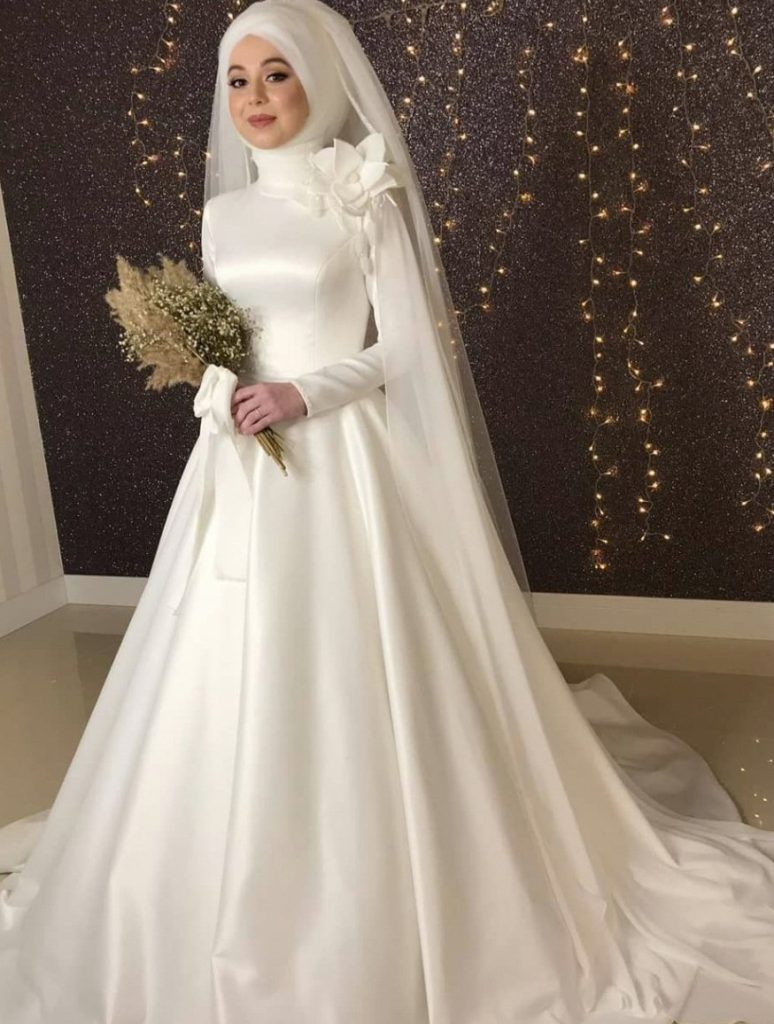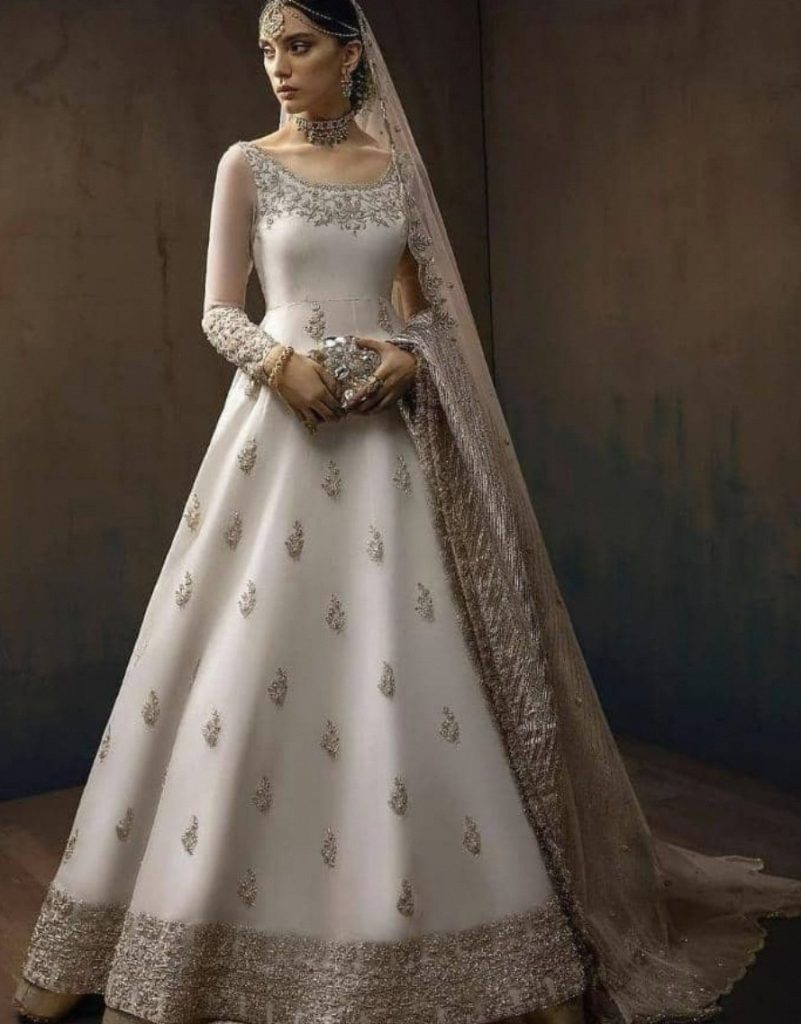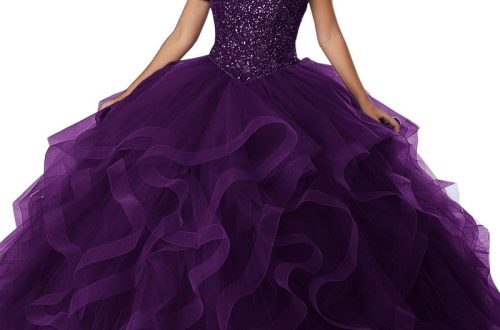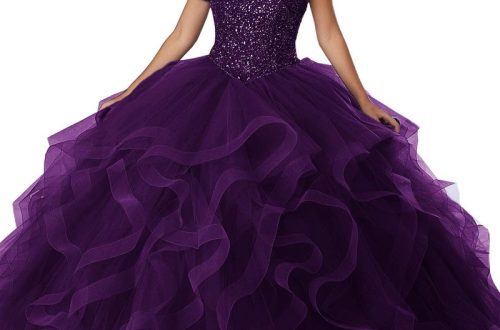Islamic weddings are steeped in tradition and cultural significance. The bride’s attire plays a central role in the ceremony, reflecting not only her personal style but also her heritage and religious beliefs. Islamic bridal fashion encompasses a diverse range of styles, each with its own unique characteristics. This article explores both heritage styles and contemporary trends that are shaping Islamic bridal attire today.

Part 1: Heritage Styles
Kaftan:
The kaftan is a loose-fitting garment that remains a popular choice for Islamic brides due to its versatility and elegance. Traditionally, kaftans feature long sleeves and a flowing silhouette that drapes from the shoulders. They can be adorned with intricate embroidery, beadwork, or other embellishments. Modern kaftans come in a wide variety of fabrics, from luxurious silks and satins to lighter chiffons and georgettes.
Lehenga:
The lehenga, originating from the Indian subcontinent, is a bridal ensemble consisting of a skirt, a blouse (choli), and a dupatta (scarf). Lehengas for Muslim brides are designed to be modest, often featuring a high-waisted skirt and a long choli that covers the midriff. The dupatta can be draped over the head or shoulders, adding another layer of elegance to the outfit. Lehengas are traditionally made from vibrant colors and rich fabrics, adorned with intricate embroidery and embellishments.
Part 2: Contemporary Trends
Modern Silhouettes:

While many Islamic brides still cherish traditional styles, there’s a growing trend towards modern silhouettes that offer a more contemporary and fashion-forward look. This includes gowns with fitted bodices, A-line skirts, and high necklines. These silhouettes allow for a touch of modern flair while still adhering to Islamic principles of modesty.
Sustainable Practices:
A growing number of eco-conscious brides are opting for sustainable practices when choosing their wedding attire. This can involve selecting dresses made from organic or recycled fabrics, or working with designers who use ethical production methods. Sustainable bridal wear is becoming increasingly available, allowing brides to look stunning while minimizing their environmental impact.
Part 3: Regional Variations
The vast and diverse Islamic world encompasses a multitude of cultures and traditions, each with its own take on bridal attire. Here’s a glimpse into some regional variations:
Middle East:
In the Middle East, bridal attire is often characterized by luxurious fabrics, rich colors, and elaborate embellishments. Gold embroidery, beadwork, and crystals are popular choices, and brides often wear heavy jewelry and headpieces to complete their look.

South Asia:
South Asian bridal wear is known for its vibrant colors and intricate details. Lehengas are a popular choice in this region, often crafted from silks and embellished with embroidery, gota patti (metalwork), and zari work (gold threadwork). Brides often wear heavy jewelry, including bangles, necklaces, and earrings.
Part 4: The Importance of Modesty
Islamic principles of modesty play a significant role in bridal attire. The emphasis is on covering the body from head to toe, with clothing that is loose-fitting and opaque. However, modesty doesn’t have to be synonymous with plain or boring. Islamic bridal wear can be incredibly beautiful and elegant, incorporating luxurious fabrics, intricate designs, and tasteful embellishments. Here are two key points to remember:
Coverage:
Islamic bridal attire typically covers the arms, legs, and chest. This can be achieved through long sleeves, high necklines, and full-length skirts or dresses.
Opacity:
The fabric used for Islamic bridal wear should be opaque enough to prevent the wearer’s skin from showing through.
Part 5: Choosing Your Perfect Bridal Look
Finding the perfect Islamic bridal attire is a journey of self-expression and cultural connection. Here are some tips to guide you through the process:

Identify Your Style:
Do you gravitate towards traditional styles or modern silhouettes? Consider your personal preferences and what makes you feel confident and beautiful. Look through bridal magazines, browse online retailers, and visit bridal boutiques to get a sense of the different styles available.
Embrace Your Heritage:
Explore the traditional bridal attire of your cultural background. This can be a great source of inspiration and a way to connect with your heritage on your wedding day. You can incorporate traditional elements into a modern design or choose a fully traditional outfit with a contemporary twist.
Comfort is Key:
Your wedding day is a long and eventful occasion. Choose an outfit that you feel comfortable and confident in. Make sure the fabric is breathable and the fit allows for ease of movement.
Accessorize Wisely:
Jewelry, headpieces, and veils can elevate your bridal look and add a touch of personality. However, it’s important to choose accessories that complement your outfit and don’t overpower it. Opt for pieces that are modest yet stylish, following Islamic principles of dress.
Work with a Skilled Tailor:
Tailoring your bridal attire can ensure a perfect fit and flatter your figure. A skilled tailor can also help you customize your chosen outfit, adding personal touches or incorporating traditional elements.

Part 6: Beyond the Dress
While the dress is a central focus, Islamic bridal attire extends beyond just the clothing. Here are some additional elements to consider:
Hijab or Headscarf:
Many Muslim brides choose to wear a hijab or headscarf on their wedding day. There are a wide variety of hijab styles to choose from, and you can select one that complements your dress and personal preferences.
Makeup and Beauty:
Islamic brides often opt for a natural and elegant makeup look. However, there are no strict guidelines, and you can choose a style that makes you feel beautiful and radiant.
Henna:
Henna is a traditional form of body art that is often incorporated into Islamic weddings. Intricate henna designs are applied to the bride’s hands and feet, adding a touch of cultural significance and beauty to the celebration.
Conclusion
Islamic bridal attire is a stunning and diverse expression of faith, culture, and personal style. By understanding the heritage styles, contemporary trends, and regional variations, you can embark on a journey to find the perfect outfit for your special day. Remember, the most important thing is to choose an attire that makes you feel confident, beautiful, and ready to embark on your new chapter as a wife.


